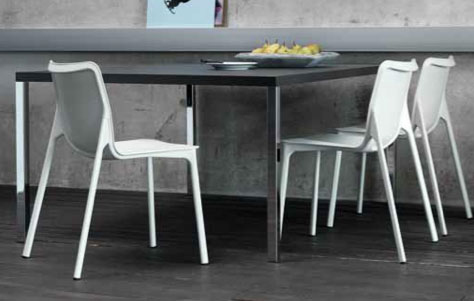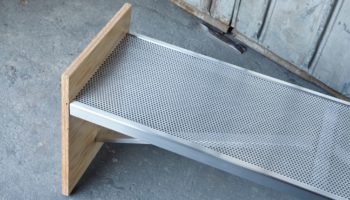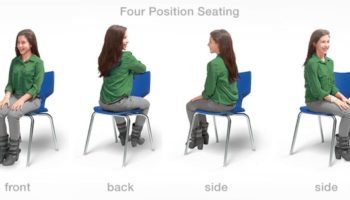Take a Test Drive with Wilkhahn’s Classy Chassis Conference Chair
In the age of the American auto bailout, it’s high time we parlayed aspects of the industry to boost our manufacturing economy. Alas, it seems German company Wilkhahn has beat us to the punch. Not only that, but they’ve also transferred this technological know how to their specialty of sorts—ergonomic office chairs. The company was an early proponent of no-frills, intuitive office seating, commencing back around 1980 to espouse “sitting in pure simplicity… without any complicated adjustment operations and independently of individual body type, size and weight… sitting with an ergonomic posture that supports natural movement and strengthens back muscles.” Wilkhahn would thus be justified in comparing the central structural element of an automobile to the supportive features of their latest task chair. And so they have: Chassis is all-purpose conference/seminar seating that synergizes structure and shell—very like a sports car, indeed.
Chassis Conference Chair. Designed by Stefan Diez for Wilkhahn.
High-Efficiency Sheet Steel and Through-Dyed Polypropylene
The above are the crucial ingredients in the recipe that imparts to Chassis its fluid aesthetic, light weight, and ergonomic precision. Its 5.4 KGs belie its excellent performance as it outshines other conference chairs in strength to weight ratio. But then, they didn’t benefit from Wilkhahn’s industrial space frame technology. This manufacturing method was chosen to keep the steel frame as light as possible, yet still exceptionally strong. The seat and backrest shell consist of one steel sheet (“distorted” and “pulled” in one piece with 300 pounds of pressure), which is then welded to the legs using four connectors salvaged from the seat/backrest sheet. The process thus has an environmentally-conscious aspect to it, which is enhanced by the low-resource means of coloration (powder-coated during welding). The final step is application of a form-fitting “membrane” of polypropylene to essentially unify the two materials into one sleek and strong chair.


Designer Stefan Diez drew inspiration for the look and performance of Chassis from an unlikely source, which is for him an icon of stability, performance, and a sculptural aesthetic: the under-rated bicycle saddle. Having earned a mile or two under my belt atop this useful implement, I can certainly understand Diez’s affinity. A good bicycle seat must provide strength, stability, and ergonomic performance (and a clean, fluid look aint bad either). Chassis’ inventive meld of steel and polypro achieves all of this and more—“the load-bearing structure and shell fuse to become an appealing whole… lucid, but still organic, contoured but still light-weight, technically precise, but still natural.”




Leave a Reply